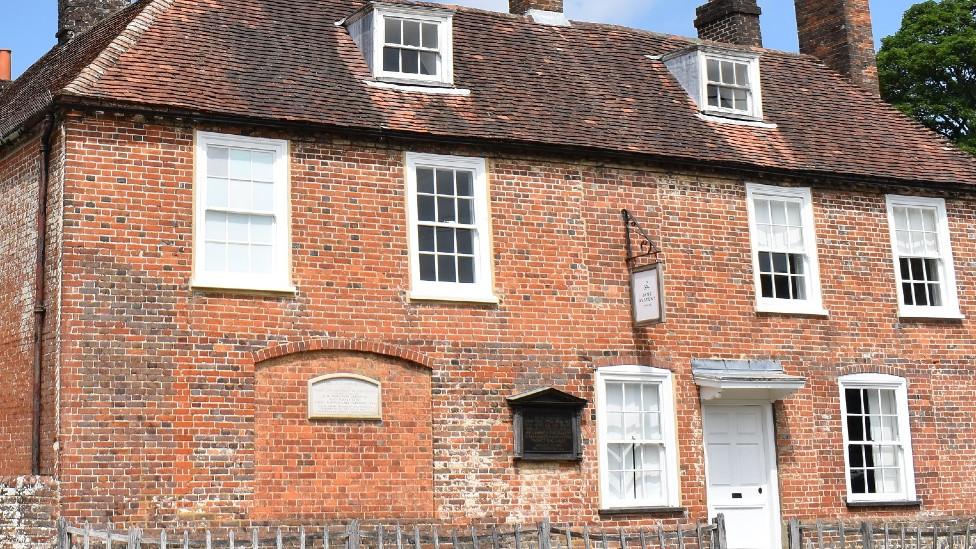Queen's Platinum Jubilee: Historic England releases picture map
- Published
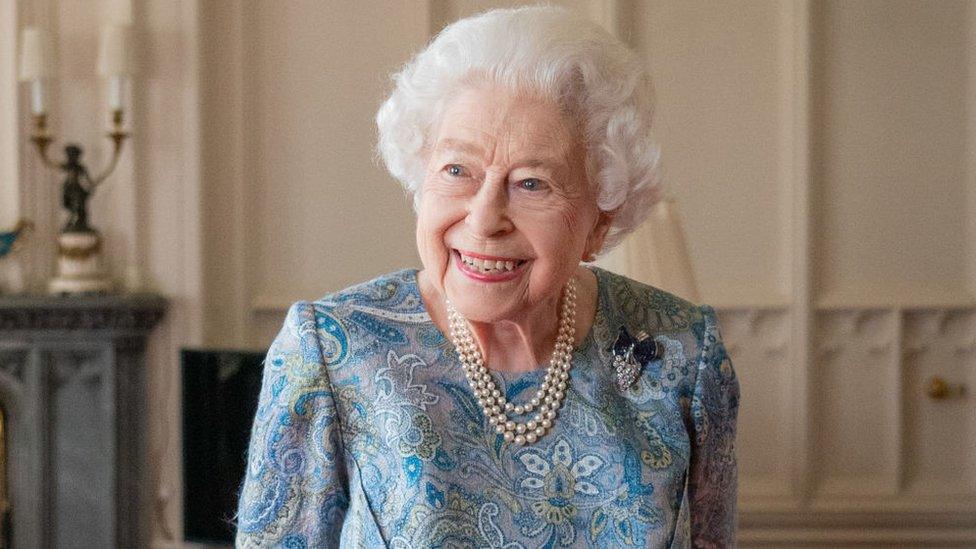
The Queen will celebrate her Platinum Jubilee in June
An online map showing pictures of visits made by the Queen has been launched for her Platinum Jubilee.
Historic England said its map highlighted some of the "significant places", external the Queen had visited both before and during her 70-year reign.
Duncan Wilson, Historic England's chief executive, said he hoped the pictures would inspire people to "follow in her footsteps" and visit local sites.
Highlights include public transport hubs, a mine and Sikh temple.
St Mary the Virgin church, Eastbourne, East Sussex
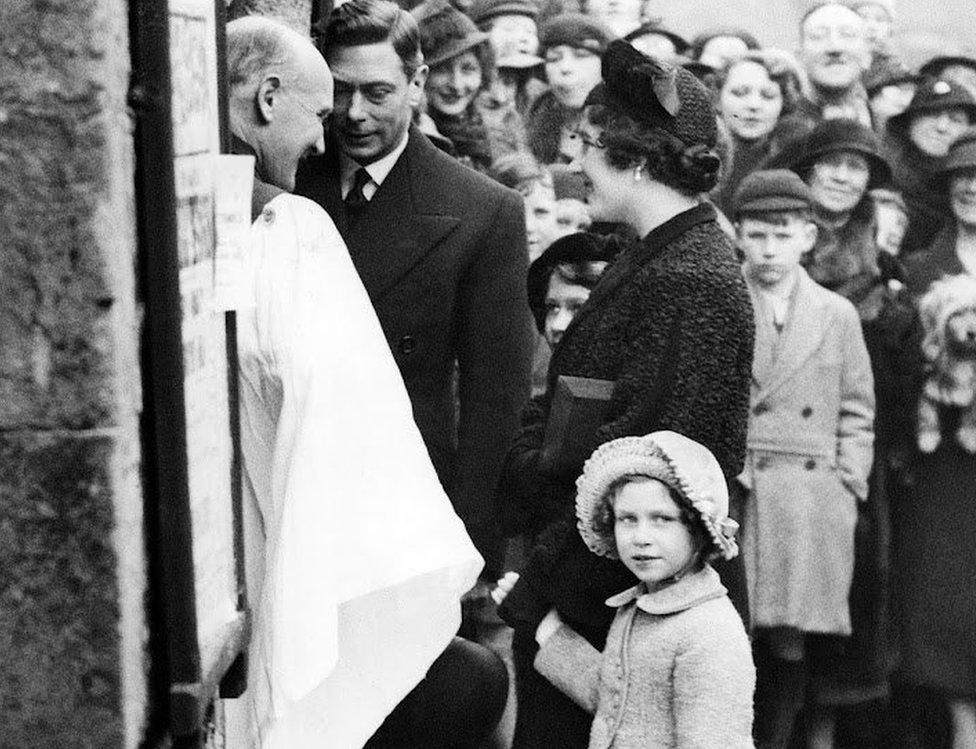
The Queen (standing between her parents) and her sister Margaret were welcomed to the church by the Reverend FP Hughes
The then-Princess Elizabeth and future queen visited the parish church for Eastbourne with her parents and sister Margaret in 1936.
Their visit to the church, the eldest parts of which date back to 12th Century, took place two months after the death of her grandfather, King George V, who had also gone to the church during his holiday on the South East Coast in 1935.

The Royal Observatory, Greenwich, London
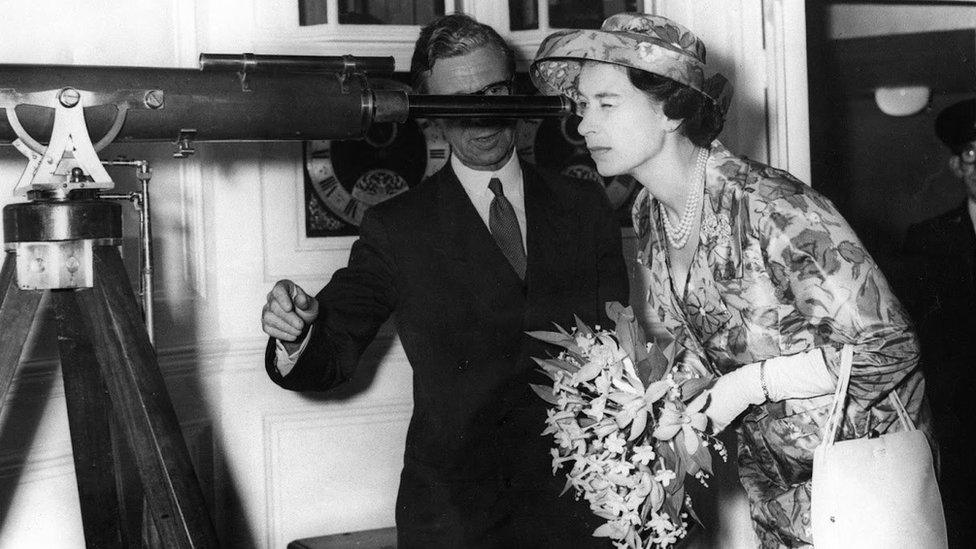
The Queen was helped by National Maritime Museum director Frank Carr to look at St Paul's Cathedral through a telescope at the Royal Observatory
The Queen visited the restored Flamsteed House, the oldest building of the old Royal Observatory, in 1960.
The observatory was founded by Charles II in 1676 with Flamsteed House, named after the first Astronomer Royal John Flamsteed, thought to be the work of Sir Christopher Wren.
A time ball, which has been in use since 1833, drops at 13:00 everyday as an aid to navigators.

Heathrow Airport, London

The Queen has had more than 30 corgis since she began her reign in 1952
The Queen and her famous entourage of Pembroke Welsh corgis were pictured at Heathrow in 1981, bound for their holidays at her Scottish home Balmoral.
Heathrow opened in 1946 as London Airport and has been headquarters of British Airways since the 1950s.

Silverwood Colliery, Rotherham, South Yorkshire
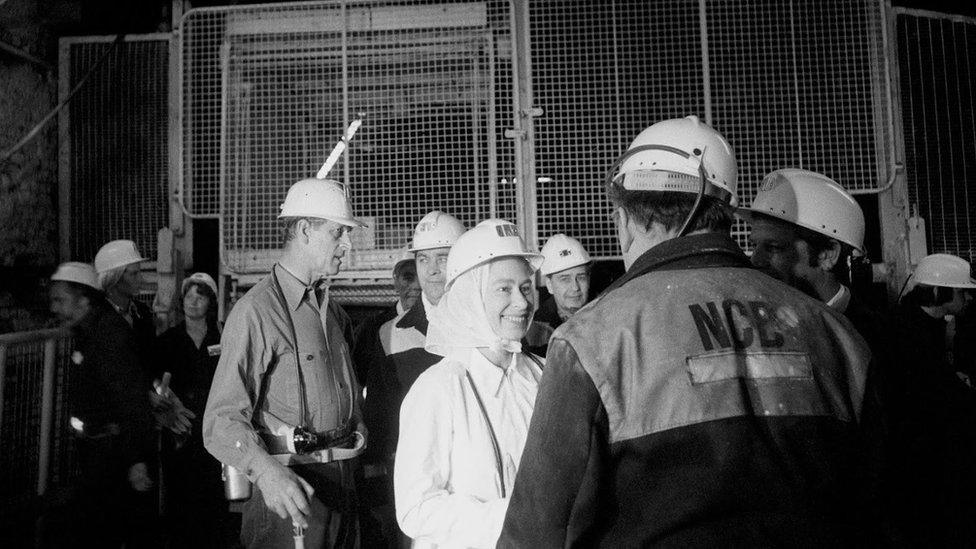
The Queen was greeted by miner Stan Wood when they went underground
The Queen and Prince Philip went 600 yards underground to meet miners on 30 July 1975, some 63 years after her grandparents, King George V and Queen Mary, visited the site.
Originally called Dalton Main, the first mine shaft was sunk at the colliery in 1900 and it was in operation until 1994, after when parts of the site were taken over by the Woodland Trust and planted with trees.

The Humber Bridge, connecting East Yorkshire and North Lincolnshire
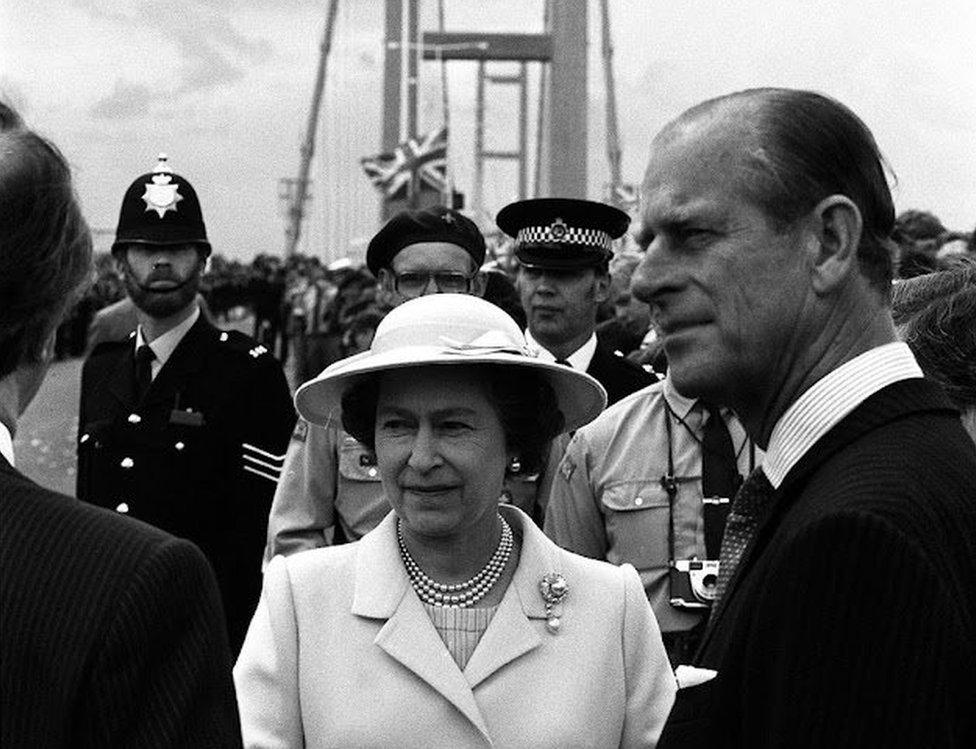
The Humber Bridge was the longest single-span suspension bridge in the world at the time of construction
The Queen officially opened the 1.4 mile (2.2km)-long bridge on 17 July 1981.
It had cost £91m and taken more than 1,000 people eight years to build and at the time of construction was the longest single-span suspension in the world.
People had campaigned for a bridge for more than 100 years as the Humber Estuary was a barrier to trade and transport. The bridge became Grade I-listed in 2017 and it is estimated that more than 10 million vehicles cross it every year.

Park Lane Interchange, Sunderland
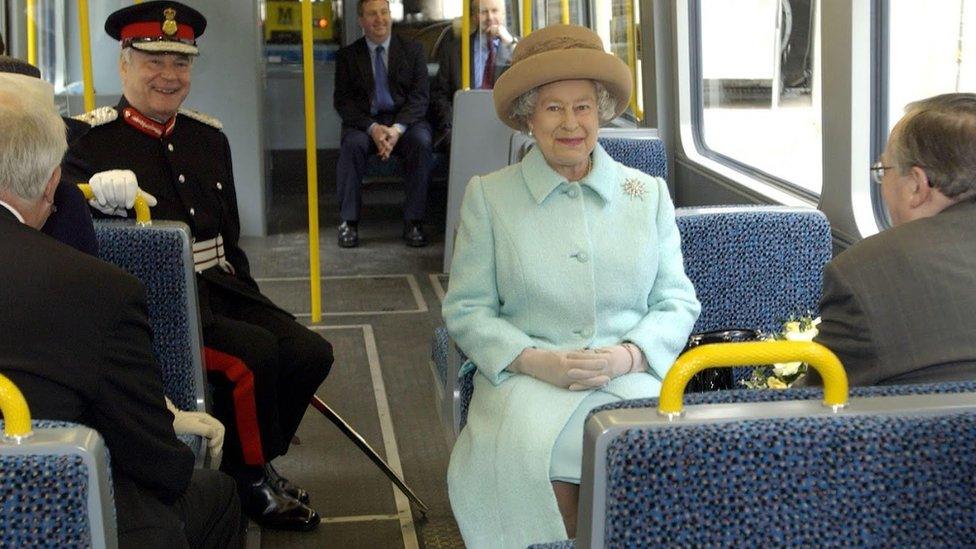
The Queen went for a ride on the new Sunderland-to-Newcastle Metro link
During her Golden Jubilee tour in 2002, the Queen took a ride on the new Sunderland to Newcastle Metro link after officially opening it at the Park Lane interchange.
The station is located below Park Lane Bus Station, which opened in May 1999 and replaced the former Sunderland Central Bus Station.

Wilton International, near Redcar, Teesside
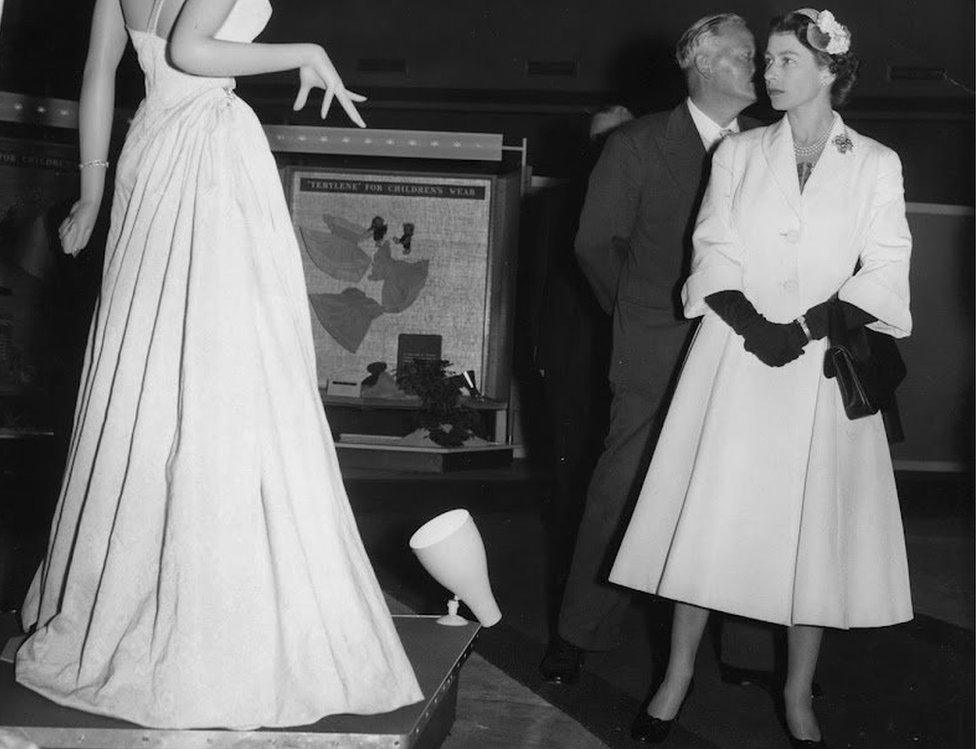
The Queen toured an exhibition of goods made from the synthetic fibre at the Imperial Chemical Industries' works
In 1956, the Queen was able to inspect a dress made of 100% Terylene as she toured an exhibition of synthetic fibres at the Imperial Chemical Industries' works.
The 2,000-acre site was formerly owned and operated by ICI and is one of the county's largest process manufacturing clusters.

Bowness-on-Windermere Pier, Cumbria
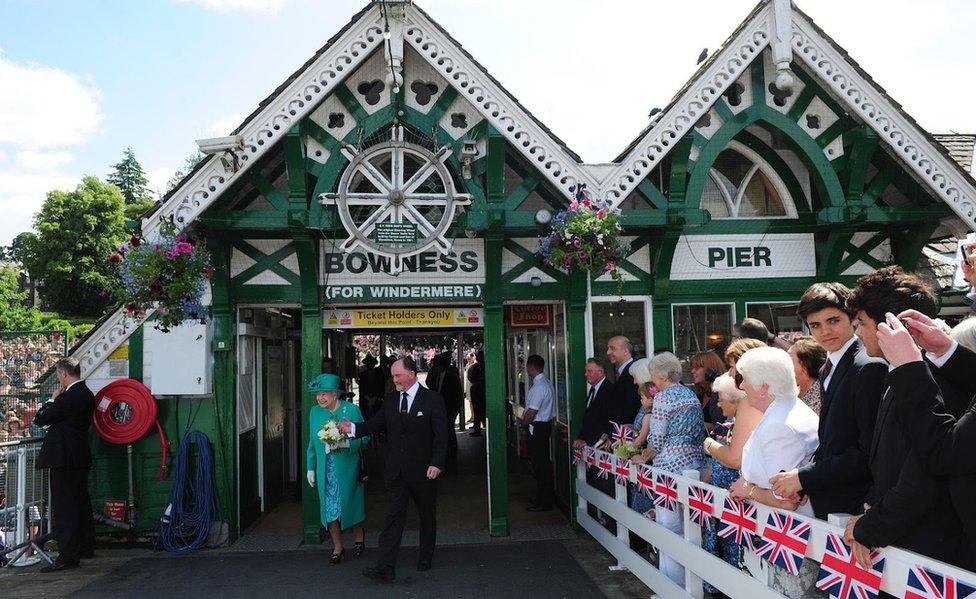
Crowds turned out to see the Queen in Bowness-on-Windermere
The Queen visited the pier on 16 July 2013 as part of a wider visit to South Lakeland.
Until the late-18th Century, Windermere, the largest natural lake in England, was used primarily for the transportation of slate, timber and other goods, but the arrival of railway and establishment of steamer services on the lake saw tourism become the area's major new industry.

Leighton Hospital, Crewe
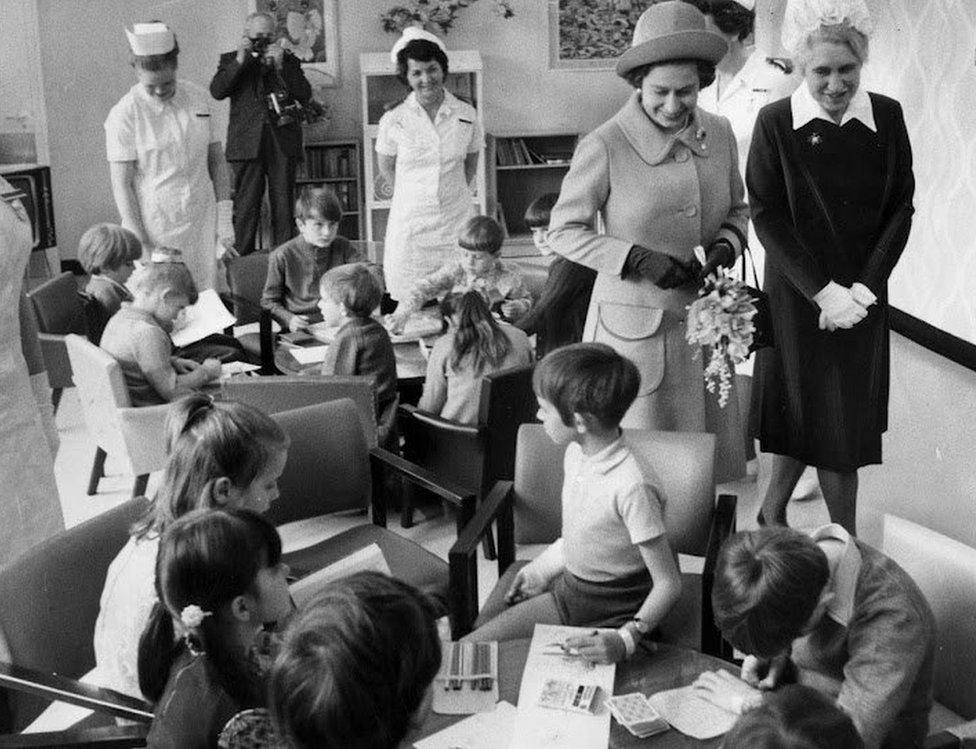
The Queen visited the children's ward at the £6m Leighton Hospital when she officially opened it in 1972
The Queen formally opened the Leighton Hospital on 4 May 1972 when she took the time to visit a children's ward.
The new £6m site was the replacement for a number of other hospitals in the Crewe and Nantwich areas.

RNLI St Ives Lifeboat Station, Cornwall
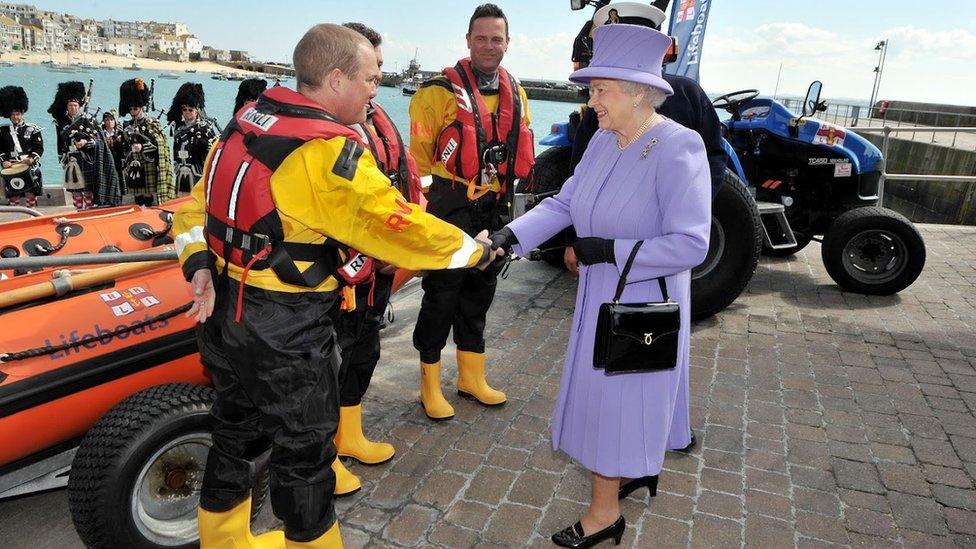
The Queen met members of the RNLI crew during her visit to St Ives in 2013
As part of her Diamond Jubilee tour in May 2013, the Queen visited the lifeboat station and Tate Gallery in St Ives.
The picturesque harbour town has had a lifeboat since at least 1840 and the current boathouse was built in 1994 to accommodate the larger new Mersey class lifeboat.
In its history, 34 medals have been awarded to members of the St Ives lifeboat crew.

Maiden Castle, Dorset
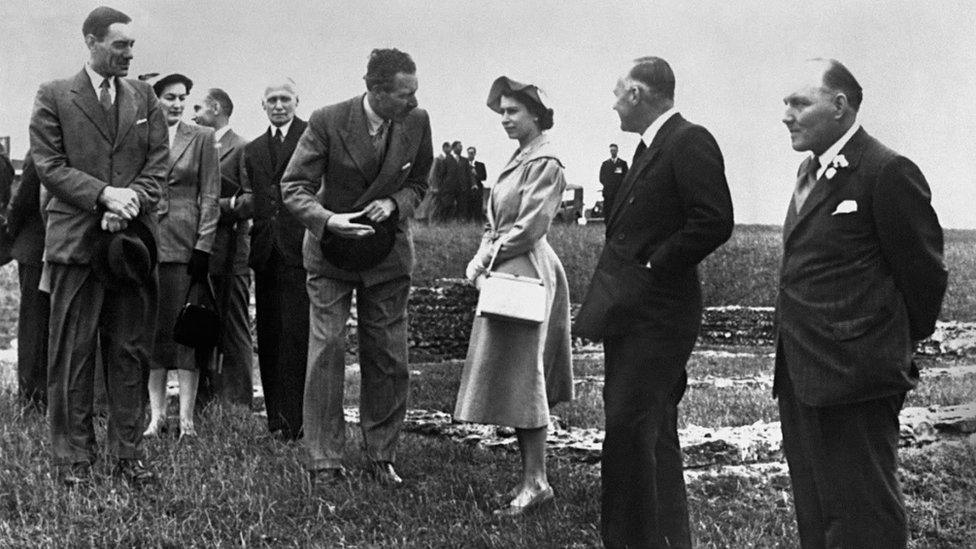
The Queen visited Maiden Castle in 1952
In July 1952, the Queen visited an archaeological excavation being overseen by Sir Mortimer Wheeler.
The scheduled monument is a multivallate (having two or more ramparts) hill fort dating from at least 500 years ago with extensive work dating from the late Iron Age (300 BC).
It has been the subject of many archaeological excavations in the 19th and 20th centuries and also featured in the novels of Thomas Hardy who uses the name Mai Dun.

Sandringham Estate, Norfolk
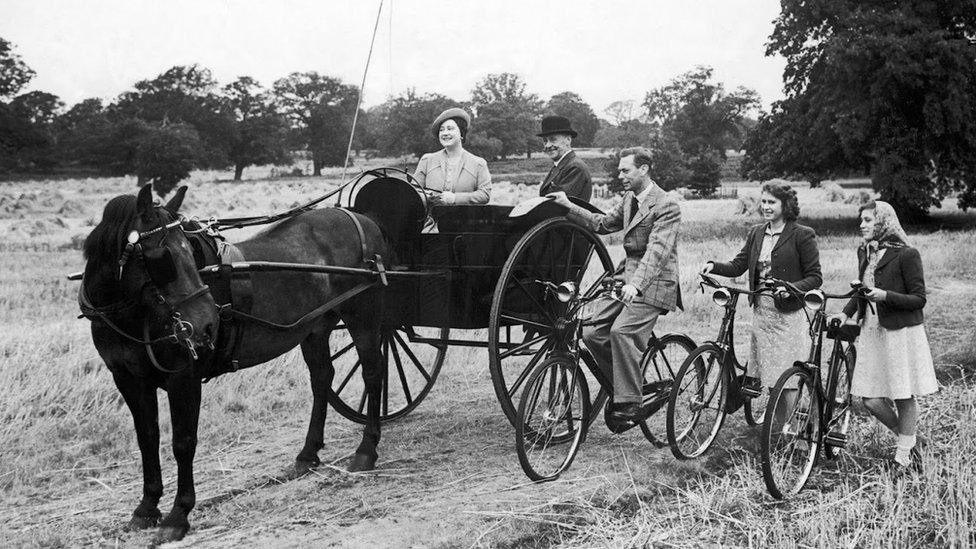
The Queen joined her parents for a tour of the estate to check on crops in 1943
Sandringham has been a royal residence since 1862 when the future King Edward VII had the 16th Century house almost completely rebuilt.
It was the setting for the first Christmas broadcast in 1932 by George V and the Queen traditionally spends her winters there, broadcasting her first Yuletide message from there in 1957.

St Pauls Walden Bury, Hertfordshire
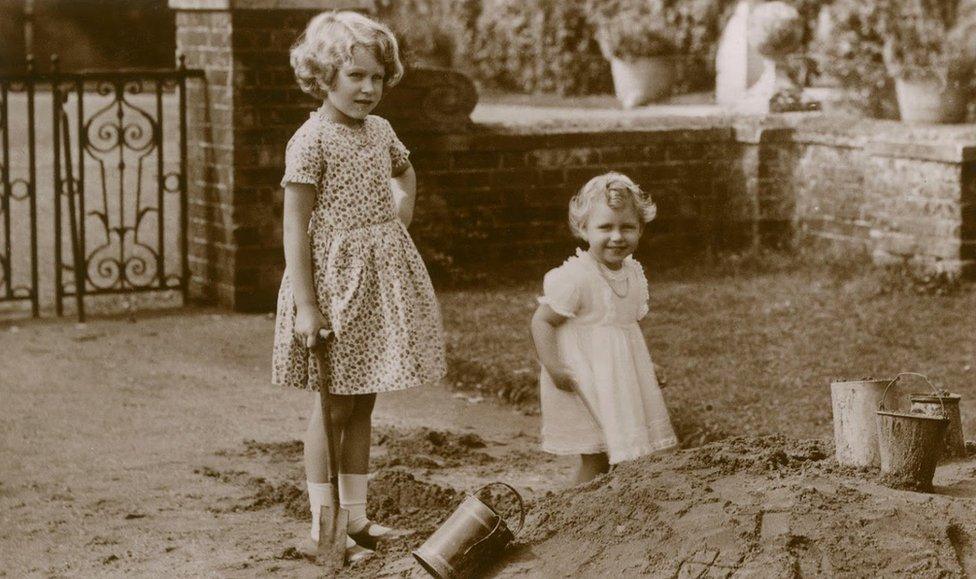
The Queen and her younger sister Margaret were pictured playing during a visit to their grandparents
The then Princess Elizabeth and her sister Margaret were pictured playing in the sandpit of the home of their grandparents, Claude Bowes-Lyon and Cecilia Cave.
The house was built in about 1730 and was the childhood home of the young girls' mother, Elizabeth the Queen Mother.

Dudson Centre, Hanley, Stoke-on-Trent

The Queen visited the Duson Centre in 1999
The Queen opened the Dudson Centre on 28 October 1999 at the original Hope Street site of the Dudson Pottery factory, which was established by Richard Dudson in 1800.
It produced attractive domestic ware until James Thomas Dudson took over the company and saw the opportunities provided by the expansion of the railways, tourism and hotel trade to become specialists in producing tableware for the hospitality industry.

Guru Nanak Gurdwara, Leicester
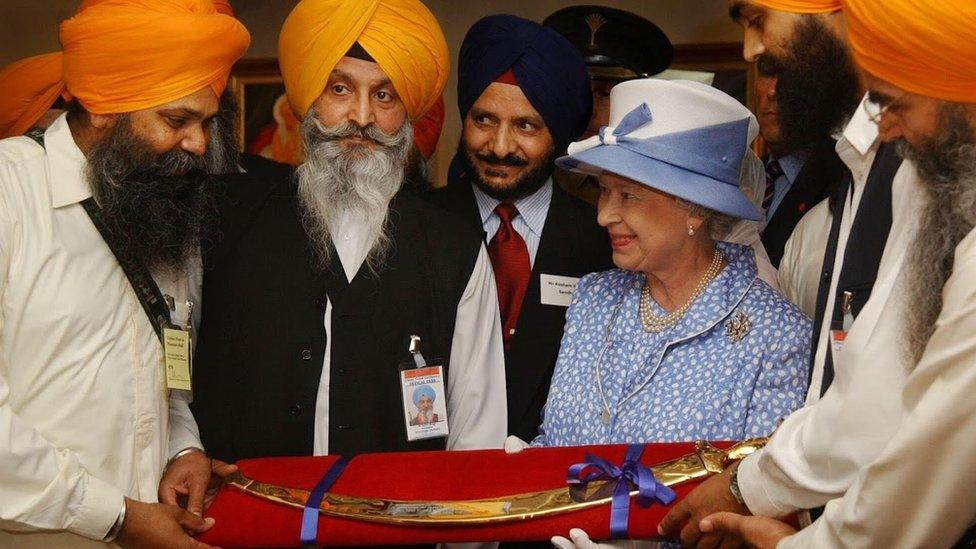
The Queen was given a ceremonial sword during her visit to a Sikh temple in Leicester in 2002
Having removed her shoes as custom dictates, the Queen received a ceremonial sword as a gift at the end of her visit to the Sikh Gurdhwara Temple, Leicester's first such site, on 1 August 2002.
Guru Nanak Gurdwara began in the 1960s before moving into a converted textiles factory in 1989.
As well as its prayer room, the temple incorporates a museum about Sikhism, Indian history and the role its soldiers played fighting in the British Army during both world wars.
All pictures subject to copyright.
- Published9 May 2022
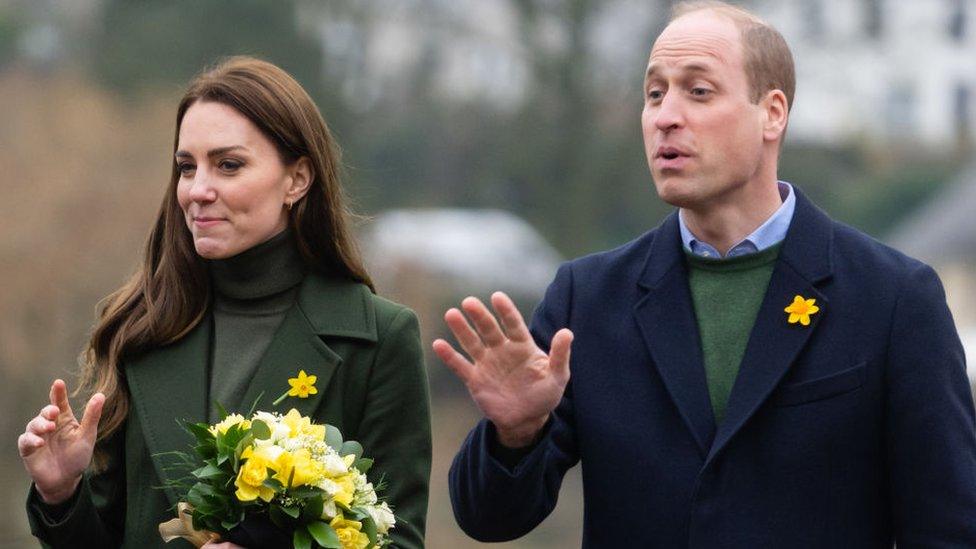
- Published22 March 2022
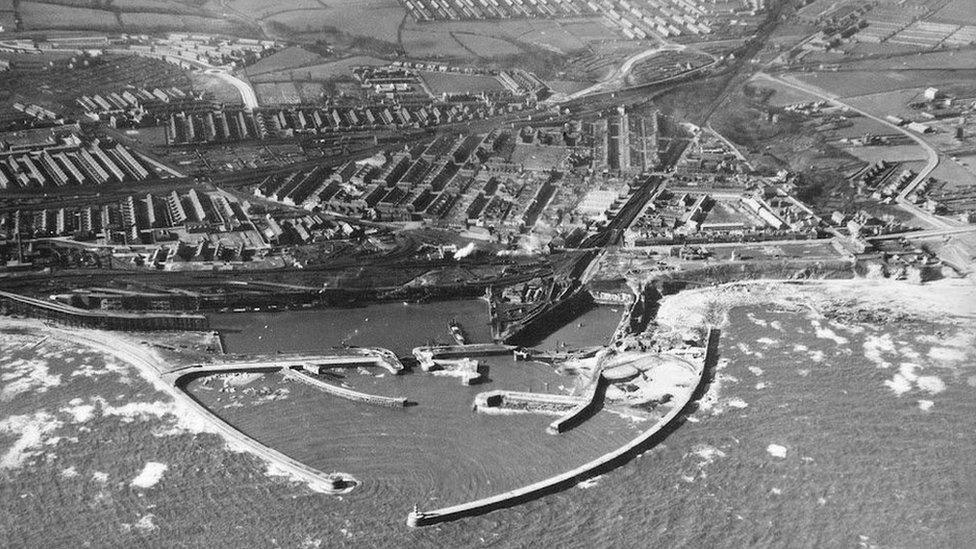
- Published22 October 2021
